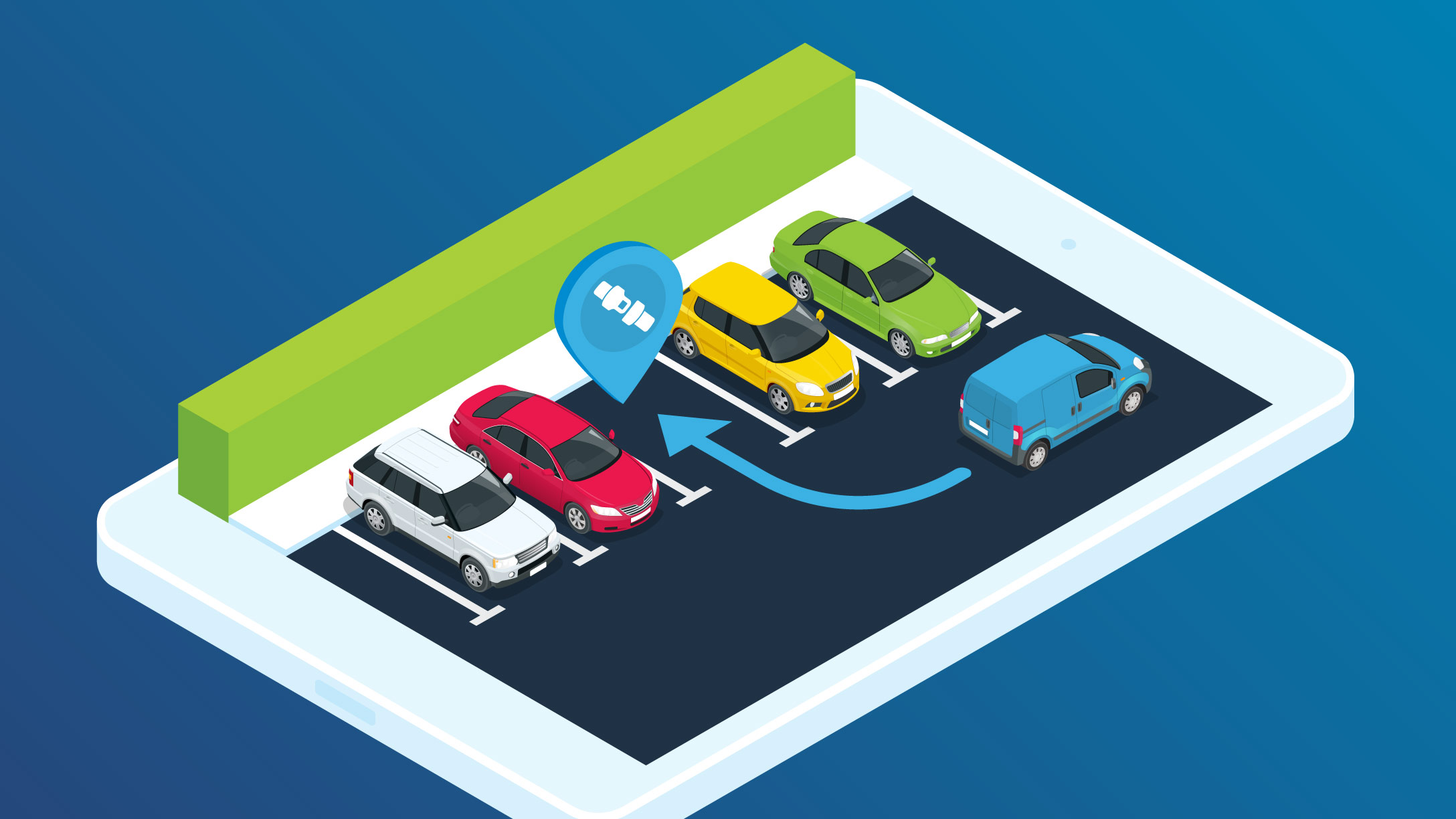Why reverse parking is safer
Driver safety does not stop in the parking lot.


Research shows that parking lots are hazardous places. Tight corners, crowded lanes and distracted drivers make a dangerous combination. Reverse parking can help.
Drivers should be even more vigilant of their surroundings while operating a vehicle in a parking lot. In this blog, we dispel common parking myths and provide tactics for safer driving in parking lots and garages.
Parking lot collisions are the top cause of fleet accidents
What is the number one type of collision for fleets? Another vehicle hitting a parked fleet vehicle was the top type of fleet accident in 2018, as reported by Automotive Fleet.
Statistics from the National Safety Council reveal that:
- Each year, there are more than 50,000 collisions in parking lots and garages.
- Parking lot and garage structure collisions lead to over 500 fatalities and more than 60,000 injuries.
- Insurance claims for collisions increase significantly on Black Friday (the peak shopping day in the U.S.).
Lower speeds limits in parking lots does not mean lower risk. Distracted driving occurs also in parking lots, as well as on the road. The National Safety Council conducted a public opinion poll which revealed that 66% of U.S. drivers would make a phone call while driving in a parking lot, 56% would text, and 29% would even take photos or videos.
See also: Distracted driving facts: common causes and solutions
Parking safety tips
The following strategies for safe parking have been compiled from industry sites and insurance providers.
- Pay attention to signage and obey parking lot speeding limits, stop signs and no-parking signs
- Scan the area and look out for pedestrians
- Drive slowly
- Do not multitask, including talking on a phone, texting, eating, or smoking while driving
- Whenever possible, reverse park into the parking space
As well, for your own safety, keep your seat belt on until the car is parked. Planning ahead so that you aren’t in a rush will allow more time for parking safely.
Reverse parking could save a life
Reverse parking means backing into a space so you can drive forward out of the space after. It can be a simple way to reduce the risk of collisions.
Backing out a space unfortunately leads to many fatalities. In a 2018 study of non-traffic motor vehicle crashes in 2015, the National Highway Traffic Safety Administration (NHTSA) found that 12,000 vehicle nonoccupants (eg. pedestrians or cyclists) were injured by vehicles backing up, and 284 were killed. This class of crashes, non-traffic, was limited to incidents occurring outside public trafficways, typically driveways and parking facilities.
Children and the elderly are particularly vulnerable to being injured or killed in backover collisions. Non-profit organization Kids & Cars reported that 25 children in the U.S. were killed in 2019 due to backover incidents alone.
In a move to change these numbers, NHTSA previously ruled that all new vehicles under 10,000 pounds (including passenger vehicles, buses and trucks) had to be equipped with rear visibility technology. To further promote safety, late last year, NHTSA issued a notice of proposed rulemaking to seek public input on replacing mirrors on heavy trucks and cars with camera-based, rear-visibility systems.
Monitoring reverse parking with telematics
Many companies have incorporated reverse parking into their corporate safety policies. Not only can this improve driver and pedestrian safety, but it can also help save costs.
With telematics, companies can monitor whether their drivers are following company rules. In MyGeotab, for example, fleet managers can set up a safety rule for backing up when leaving. This rule identifies drivers who back out their vehicles when leaving a location. The system can send a notification for when the rule is broken, either by email, popup, beep warning, or text message.
Fleet managers can use these insights to help drivers define their strengths and weaknesses, and to set up a customized driver coaching program if necessary.
Reverse parking myths
Myth #1: Reverse parking disrupts traffic more than forward parking
While reverse parking may disrupt traffic flow, the alternative — backing out of a parking space — is also disruptive and hazardous. It is much better to enter the flow of oncoming traffic with the front of your vehicle, than to back into it.
Myth #2: Reverse parking is less safe
The purpose of reverse parking is to make the environment safer when the driver leaves the parking space. When leaving the parking space, the driver is able to see the surroundings more clearly.
Additional findings: Parking and backing collisions
IIHS, Rear Crash Prevention Technology
It is inevitable that at some point you will need to back up into a tight parking lot where the risk of collision is quite high. The Insurance Institute for Highway Safety (IIHS) and Highway Loss Data Institute (HDLI) have conducted research to narrow down the top rear autobrake systems to mitigate this risk. To learn more, visit the IIHS site.
NHTSA, Backover Prevention Tips
The National Highway Traffic Safety Administration has established a list of tips to prevent backover incidents involving children. Something as simple as walking around your vehicle and checking the area before backing up can save a child’s life. Check out general pedestrian safety tips here.
AAA, Safe Parking Strategies
AAA advises drivers to back into parking spots or pull-through, and not fully rely on rear-view or traffic alert technology in vehicles which have their limitations. AAA warns that reversing out a space is a risky behavior as you are putting pedestrians at risk. Read the article at Automotive Fleet.
OHSA, Preventing Backovers
Read about the dangers of reversing industrial vehicles (such as dump trucks or tractor trailers) from the U.S. Department of Labor’s Occupational Safety and Health Administration (OSHA). Safety recommendations include using a spotter, proximity detection devices, and creating internal traffic control plans on work sites. Read the full article here.
Conclusion
Even if injury is avoided, a fender-bender in a parking lot can result in lost time and money due to out-of-service vehicles, filing insurance claims and vehicle repair costs. Businesses have great incentive to monitor parking closely to increase fleet safety and reduce fleet costs.
Originally published October 26, 2016. Updated August 21, 2020.
Subscribe to get industry tips and insights

Jad Bucktowar is an engineering professional with experience in the information and technology and service industries.
Table of Contents
Subscribe to get industry tips and insights
Related posts

The fleet safety incentive program checklist for driver engagement that lasts
June 19, 2025
2 minute read

Multi-stop route planners: A fleet manager's guide + best tools in 2025
June 5, 2025
5 minute read

Geotab: Unlocking value and enhancing K-12 transportation with data-driven fleet management
February 21, 2025
1 minute read

What Is Fleet Management? A Complete Guide for Fleet Managers
January 21, 2025
5 minute read

